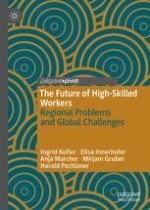2020 | OriginalPaper | Buchkapitel
2. Global Trends Shaping the World of Work
verfasst von : Ingrid Kofler, Elisa Innerhofer, Anja Marcher, Mirjam Gruber, Harald Pechlaner
Erschienen in: The Future of High-Skilled Workers
Aktivieren Sie unsere intelligente Suche, um passende Fachinhalte oder Patente zu finden.
Wählen Sie Textabschnitte aus um mit Künstlicher Intelligenz passenden Patente zu finden. powered by
Markieren Sie Textabschnitte, um KI-gestützt weitere passende Inhalte zu finden. powered by
